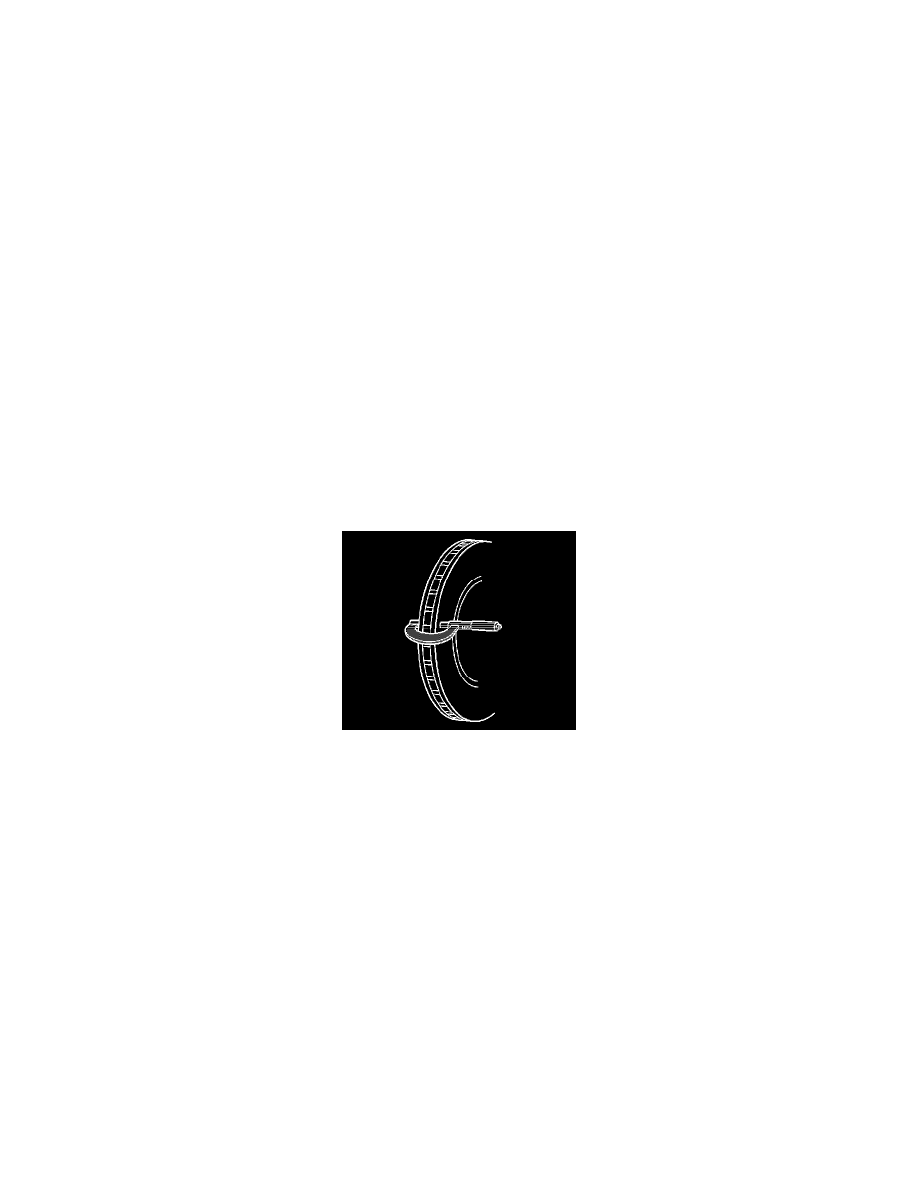Sierra Classic 2500 4WD V8-6.0L (2007)

1. Rotate the rotor until the lowest reading is displayed on the indicator dial, then set the dial to zero.
2. Rotate the rotor until the highest reading is displayed on the dial.
3. Mark the location of the high spot relative to the nearest wheel stud, or studs.
4. Measure and record the amount of LRO.
16. Compare the brake rotor assembled LRO to the following specification:
^
Front rotor maximum allowable assembled lateral runout: 0.13 mm (0.005 inch) (RPOs JC4, JH1, JH6, JH7)
^
Front rotor maximum allowable assembled lateral runout: 0.05 mm (0.002 inch) (RPOs JF3, JF7)
^
Rear rotor maximum allowable assembled lateral runout: 0.13 mm (0.005 inch) (RPOs JC4, JH1, JH6, JH7)
17. If the brake rotor assembled LRO measurement exceeds the specification, bring the LRO to within specifications. Refer to Brake Rotor Assembled
Lateral Runout Correction. See: Brake Rotor Assembled Lateral Runout Correction
18. If the brake rotor assembled LRO measurement is within specification, install the brake caliper and depress the brake pedal several times to secure
the rotor in place before removing the J 45101-100 and the lug nuts.
Brake Rotor Surface and Wear Inspection
Brake Rotor Surface and Wear Inspection
Caution: Refer to Brake Dust Caution.
1. If the inboard friction surface of the brake rotor is not accessible, reposition and support the caliper with the brake pads. Refer to Front Disc Brake
Pads Replacement (1500 Series) Front Disc Brake Pads Replacement (25/3500 Series) and/or Rear Disc Brake Pads Replacement (1500 Series)
Rear Disc Brake Pads Replacement (25/3500 Series).
2. Clean the friction surfaces of the brake rotor with denatured alcohol, or an equivalent approved brake cleaner.
3. Inspect the friction surfaces of the brake rotor for the following Braking Surface Conditions:
^
Heavy rust and/or pitting Light surface rust can be removed with an abrasive disc. Heavy surface rust and/or pitting must be removed by
refinishing the rotor.
^
Cracks and/or heat spots
^
Excessive blueing discoloration
4. If the friction surfaces of the brake rotor exhibit one or more of the Braking Surface Conditions, the rotor requires refinishing or replacement.
5. Using a micrometer calibrated in thousanths-of-a-millimeter, or ten-thousanths-of-an-inch, measure and record the scoring depth of any grooves
present on the rotor friction surfaces.
6. Compare the groove scoring depth recorded to the following specification:
Brake rotor maximum allowable scoring: 1.50 mm (0.059 inch)
7. If the brake rotor scoring depth exceeds the specification, or if an excessive amount of scoring is present, the rotor requires refinishing or
replacement.
Brake Rotor Thickness Measurement
Brake Rotor Thickness Measurement
Caution: Refer to Brake Dust Caution.
